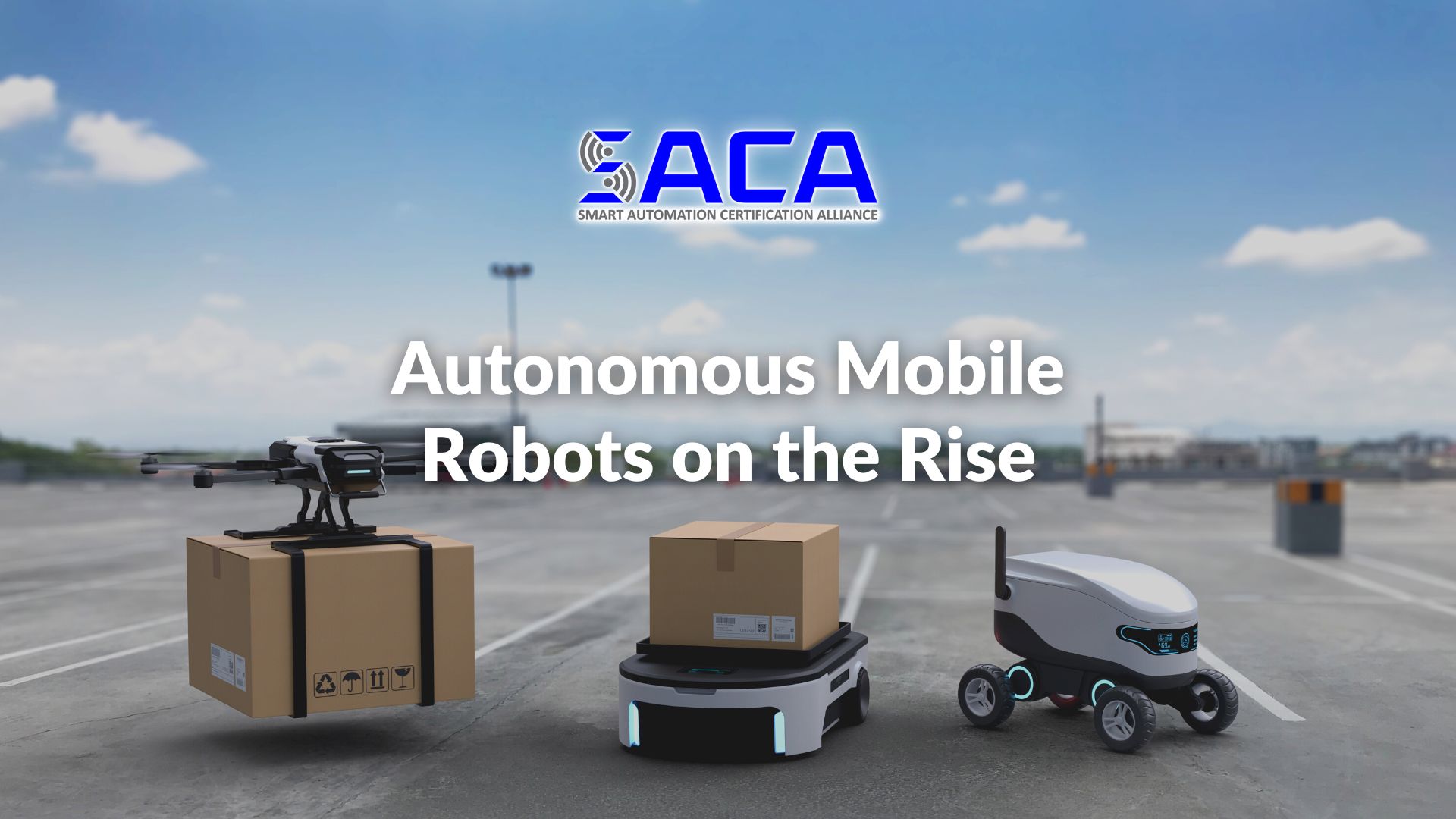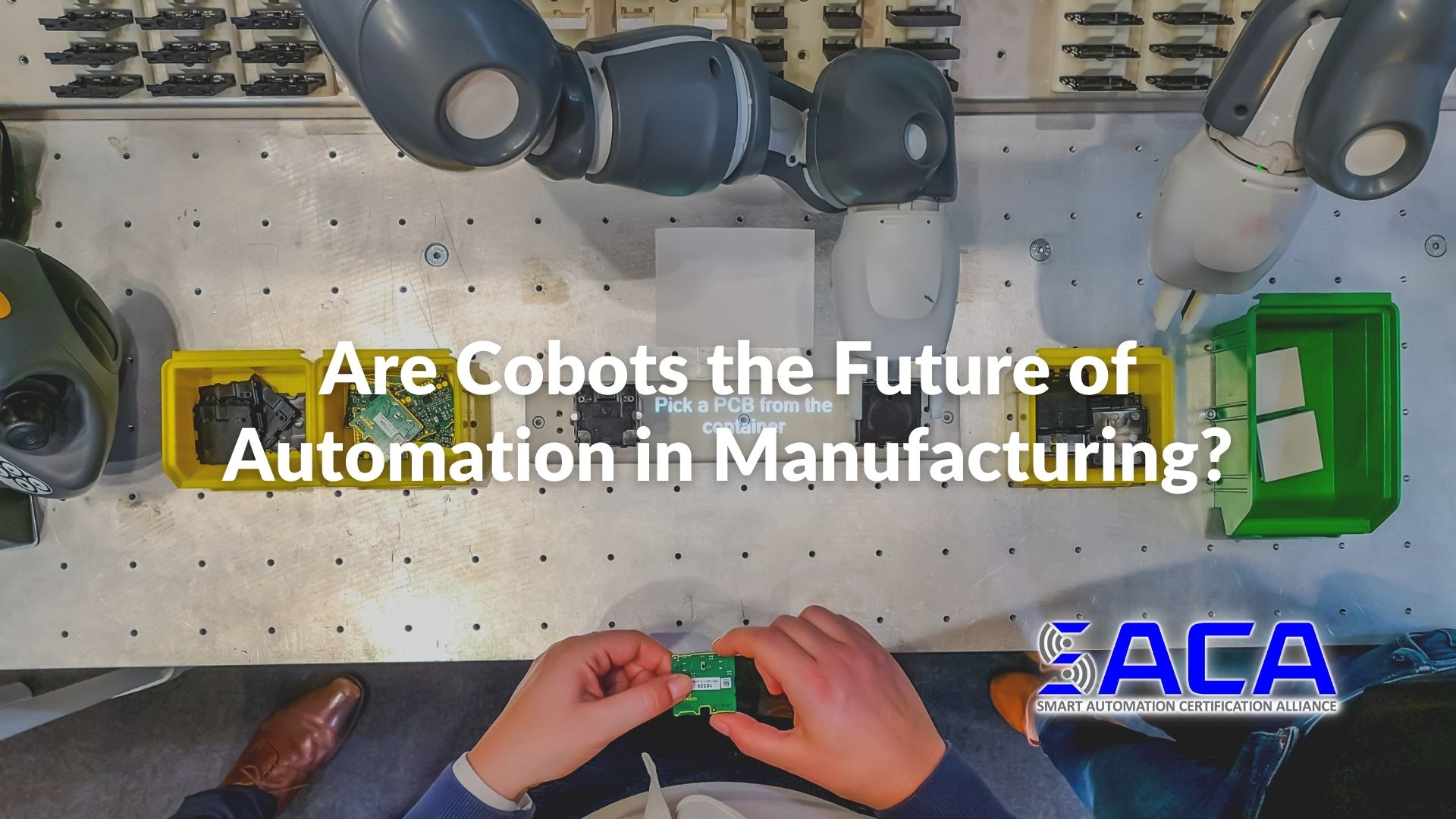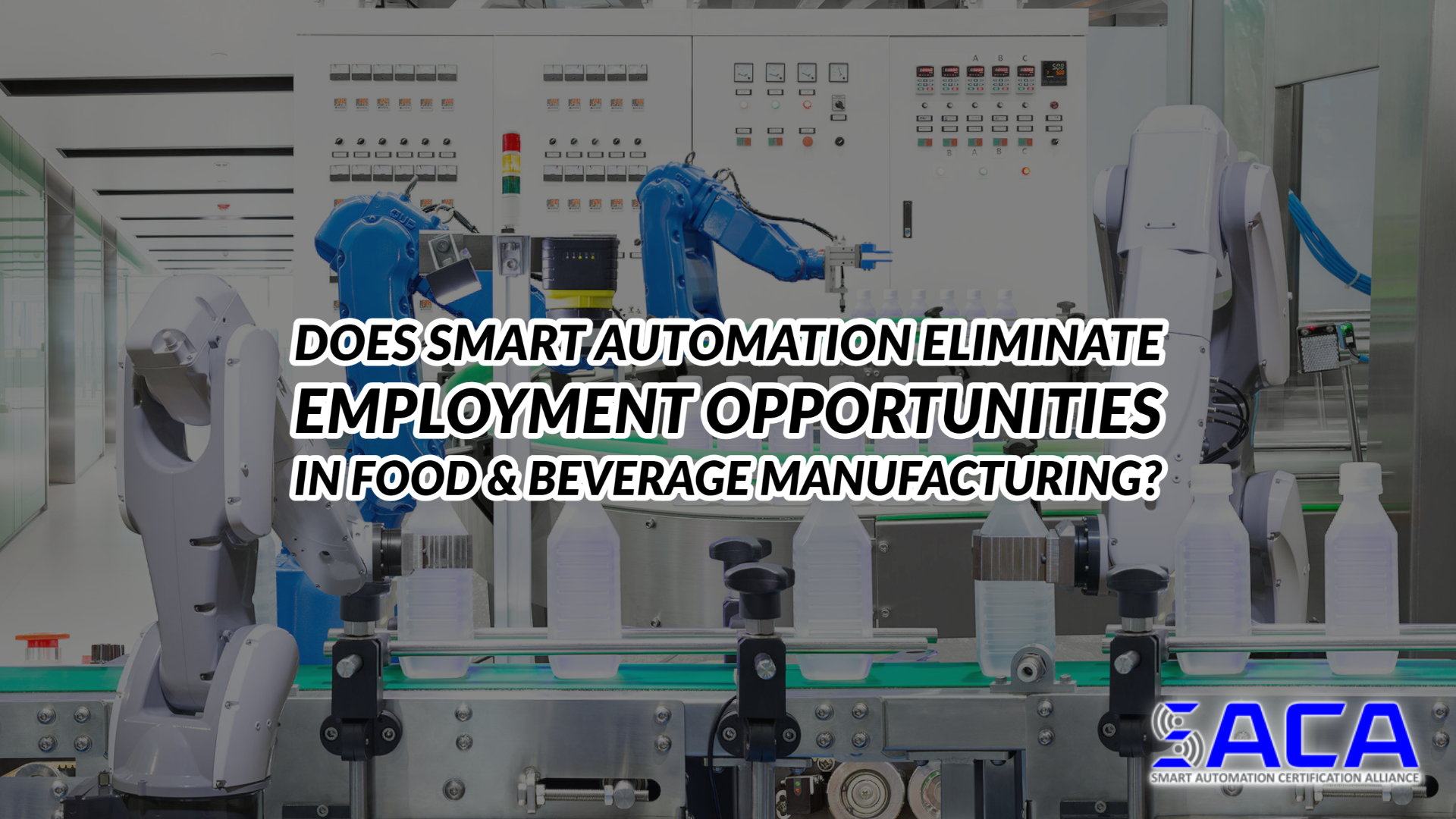Artificial Intelligence Transforming Modern Manufacturing
How intelligent are modern manufacturers? According to Albert Einstein, “the measure of intelligence is the ability to change.” By this standard, today’s ever-changing manufacturers are very intelligent indeed.
Most manufacturers will tell you that the one constant they can count on is change. It sounds ironic, but manufacturers know that they must be constantly innovating if they’re going to continue to improve productivity and efficiency.
For many manufacturers, the incorporation of various forms of advanced Industry 4.0 technologies has allowed them to meet new challenges and thrive during an extended period of difficult times caused by pandemic disruptions, supply chain issues, and inflationary pressures.
In this article, we’ll take a closer look at one of those advanced Industry 4.0 technologies — artificial intelligence (AI) — that is revolutionizing the industrial workplace. We’ll also discuss how SACA certifications can ensure that your workers possess the advanced skills they need to succeed in today’s evolving manufacturing sector.
What is Artificial Intelligence?
What do you think of when you hear the phrase “artificial intelligence?” For some, images of sentient robots straight out of a science-fiction movie may jump to mind. Is this what we’re talking about when we discuss AI in the context of modern manufacturing? Of course not!
While robots certainly occupy an important and increasing role in manufacturing facilities around the world, AI is all about computers and data. According to IBM, “[a]t its simplest form, artificial intelligence is a field, which combines computer science and robust datasets, to enable problem-solving. It also encompasses sub-fields of machine learning and deep learning…These disciplines are comprised of AI algorithms which seek to create expert systems which make predictions or classifications based on input data.”
What does AI mean in a practical sense? According to Oracle, “artificial intelligence refers to systems or machines that mimic human intelligence to perform tasks and can iteratively improve themselves based on the information they collect.”
Oracle sums up AI this way:
“AI is much more about the process and the capability for superpowered thinking and data analysis than it is about any particular format or function. Although AI brings up images of high-functioning, human-like robots taking over the world, AI isn’t intended to replace humans. It’s intended to significantly enhance human capabilities and contributions. That makes it a very valuable business asset.”
How Can Artificial Intelligence Improve Workplace Safety?
So how is AI being incorporated into modern manufacturing operations? One area in which AI is playing an increasingly important role happens to be one of the most important considerations in any manufacturing facility: safety.
According to a recent Industry Today article by Rob Schoenthaler, “[i]ncreasing worker safety has become a huge priority to the workplace…As a result, spending on safer equipment became a top priority for companies half a century ago and still continues to this day. Nearly every profession has adopted this principle of prioritizing safety, especially fields that yield higher risks for employees, such as construction and manufacturing.”
Schoenthaler notes that the repetitive nature of the physical labor involved in manufacturing helps employers to identify safety risks. However, he points out that most current safety programs are reactive in nature, intended to minimize injuries when a dangerous situation occurs.
While these safety measures offer some improvement over the dangerous conditions that have existed for years, Schoenthaler argues that “a proactive approach is imperative to prevent these unfortunate situations from happening in the first place.” That’s where AI comes into play.
Schoenthaler explains that “new innovations in manufacturing technology have allowed artificial intelligence to use continuous monitoring of work activity to detect a potential accident before it occurs. AI can now analyze videos filmed by cameras all around the factory floor to detect potential employee safety violations and proactively warn the worker of the danger. For example, if the camera spots an employee wearing the wrong protection equipment or positioned too close to a hazardous vehicle, it will contextualize this data and alert the company so they are aware of the safety hazard.”
For manufacturers, using AI proactively in this way “can significantly reduce safety risks in the workplace.” Indeed, “the technological innovations of AI have proven to be a promising solution for increasing workplace safety, and will be for years to come.”
Of course, “[m]anaging the switch to AI will require employees to be well-trained on new operating procedures and best practices.” Like similar new Industry 4.0 technologies, AI will require highly-skilled workers trained to work with these new technologies to fully reap the benefits.
Supply Chain Woes? Artificial Intelligence to the Rescue!
Does AI offer benefits in areas other than safety? Absolutely! In a recent Industry Today article by John Dwinell, the author details how AI can be used to improve operations and enhance inventory visibility in warehouses and other key components of the supply chain.
Dwinell summarizes the supply chain problems plaguing operations across the country: “Warehouses are buckling beneath the pressure of demand, as e-commerce volumes continue to rise and global supply chains remain in gridlock. Inventory needs to be shipped, and fast, but labor shortages are directly impacting distribution centers.”
He acknowledges that “automation technologies have gained momentum with the rise of robotic systems capable of moving and sorting inventory.” However, he notes that “inventory visibility has been largely left out of the conversation. This has placed warehouse operators in the dark when it comes to critical data, such as product quality assurance and the health of sorting systems.”
That’s where AI paired with image recognition technology makes a critical difference. “When captured and analyzed effectively, data can be a game changer for streamlining operations. Specifically, understanding the quality of inventory and gaining traceability to know where everything is in real time.”
Dwinell explains how these technologies work together “to gain complete inventory visibility and enhance automation and throughput”:
“If a picture is worth a thousand words, then an image captured within the warehouse is worth a thousand data points. Photos reveal, in real time, the condition of inventory when it arrives by sharing information about all six sides of a package, providing a holistic understanding of quality. Images…are then stored, generally via the cloud, to build a catalog of products. This creates an immense amount of valuable data.”
Dwinell adds that “[b]ecause AI is capable of learning, AI models that are trained well will be able to identify the source of many common problems. One of the biggest advantages of utilizing AI in this capacity is that it does not require coding knowledge to operate, nor assistance from data scientists for model creation. And there’s an added plus: AI can often be integrated with existing warehouse technology, creating a fully automated workflow.”
This is why Dwinell believes that “[a]rtificial intelligence is no longer a ‘nice to have,’ it’s a need to have…image recognition and AI can be the ‘light switch’ that provides visibility into the once-dark distribution lifecycle. Together, image recognition and AI eliminate guesswork, enable greater visibility, and provide automation that will be the deciding factor in which companies can deliver on their promises to customers.”
SACA Certifications Can Ensure Workers Possess the Skills You Need
Manufacturers looking to improve efficiency and increase productivity are increasingly looking to advanced Industry 4.0 technologies to automate their operations and processes. Technologies like artificial intelligence are transforming modern manufacturing facilities, but their adoption is not without hurdles.
Incorporating these new advanced technologies requires hiring workers with Industry 4.0 skills or training current workers to operate, maintain, troubleshoot, and repair these new systems. Unfortunately, these workers remain in short supply in today’s tight job market.
How can manufacturers ensure that they hire or train people with the advanced skills they need in a modern smart factory environment? Fortunately, they don’t have to figure everything out by themselves. The Smart Automation Certification Alliance (SACA) sits at the forefront of the effort to certify students and workers who demonstrate the required knowledge and hands-on smart automation skills employers so desperately need, including artificial intelligence.
SACA’s certifications were developed in conjunction with industry partners who could speak from experience about their needs when it comes to workers able to work alongside a variety of advanced automation technologies. For example, SACA offers a Certified Industry 4.0 IT Systems Specialist certification that prepares individuals to succeed in information technology technician and engineering positions in modern production environments that use Industry 4.0 technologies.
This certification features a variety of elective micro-credentials that are ideal for individuals seeking to become versed in Industry 4.0 automation, such as: robot system operations and integration; programmable controller systems; industrial Ethernet communications; smart sensors; SCADA systems; Industry 4.0 data analytics; and industrial network security systems.
For workers, SACA certifications can help market their smart automation skills to potential employers. For those employers, SACA certifications represent confirmation that a worker has the skills to hit the ground running in the workplace. To learn more about Industry 4.0 certifications and how SACA can help both future workers and industrial employers begin the task of bridging the Industry 4.0 skills gap, contact SACA for more information.
- Published in News, Technology
SACA Certifications Approved as Industry Based Certifications for Texas High Schools
The Smart Automation Certification Alliance (SACA) is proud to announce the inclusion of SACA certifications on the latest Texas Education Agency’s (TEA) list of approved Industry Based Certifications (IBC). This will allow access for students at Texas’ 3,000+ high schools to become certified in cutting-edge Industry 4.0 competencies and prepare them for jobs in rapidly changing industrial environments. This will aid both the Texas workforce and industry in closing the skills gap that currently exists worldwide as Industrial Internet of Things (IIoT) technology continues to be adopted.
The adoption of new IBCs by the TEA is a bi-annual process and certifications must pass a rigid vetting process based around six criteria to make certain that certifications prepare students for in-demand jobs within the current workforce. The TEA ensures the relevance of these certifications by soliciting feedback from industry councils and employers. The inclusion of SACA certification will allow students to enroll in SACA-aligned programs, which will aid school districts by receiving additional funding for students who attain SACA certifications.
The TEA-approved SACA certifications include:
- Certified Industry 4.0 Associate – Basic Operations (C-101)
- Certified Industry 4.0 Associate – Robot System Operations (C-103)
- Certified Industry 4.0 Automation Systems Specialist I – Electrical Systems 1 (C-201)
- Certified Industry 4.0 Automation Systems Specialist I – Electric Motor Control Systems 1 (C-202)
- Certified Industry 4.0 Automation Systems Specialist I – Motor Control Troubleshooting 1 (C-204)
- Certified Industry 4.0 Automation Systems Specialist I – Programmable Controller Troubleshooting 1 (C-208)
- Certified Industry 4.0 Automation Systems Specialist I – Robotic Operations 1 (C-215)
- Certified Industry 4.0 Automation Systems Specialist I – Robotic System Integration 1 (C-216)
About SACA
The Smart Automation Certification Alliance (SACA) is a non-profit organization whose mission is to develop and deploy modular Industry 4.0 certifications for a wide range of industries. With the help our partners, SACA has created certifications that are industry-driven, developed for industry by industry. They are developed through a rigorous process that begins with the creation of truly international skill standards, endorsed by leading experts in Industry 4.0 technologies throughout the world.
- Published in News, Technology
Industry 4.0 Creates Need for IT & Cybersecurity Experts
The challenges facing industries across the country and around the world continue in the ongoing wake of the COVID-19 pandemic. When you add staggering inflation to supply chain disruptions, it’s no wonder companies everywhere are searching for ways to increase productivity and efficiency.
One of the primary solutions many companies are embracing is a range of advanced automation technologies collectively known as the Industrial Internet of Things (IIoT) or Industry 4.0. The shift to connected-systems technologies began well before the pandemic, but the effects of the pandemic have greatly increased the adoption rate of Industry 4.0 technologies.
Whether it’s adding robots, autonomous mobile robots (AMRs), or sensors to machines, Industry 4.0 technologies are gaining ground and making a difference. However, adoption of these new solutions can also create an entirely new set of needs that companies must address.
In this article, we’ll take a brief look at how Industry 4.0 technologies create a need for specialized IT and cybersecurity experts to oversee and manage these new solutions. We’ll also explain how the Smart Automation Certification Alliance (SACA) can help companies find the right experts with the advanced Industry 4.0 skills they need to take their businesses to the next level.
Looking to Industry 4.0 for Solutions
Regardless of your industry or the size of your company, no one has been immune from the continuing effects of the COVID-19 pandemic and the subsequent supply chain issues and rising costs associated with inflation. For many companies, it seems like it’s simply one thing after another with a new challenge arising every day.
To combat these problems, companies everywhere are searching for solutions that allow them to increase productivity and efficiency even in the midst of an extremely tight labor market. As a recent Automation.com article by Henry Martel points out, “an increasing number of [manufacturers] are embracing Industry 4.0 to bolster enterprise efficiency by making their manufacturing more aware, predictive, and autonomous.”
But what does embracing Industry 4.0 really mean, in a practical sense? Martel breaks it down for us in his article:
“The shift from Industry 3.0 to Industry 4.0 involves the convergence between information technology (IT) and operational technology (OT). Connecting OT systems to an IT network allows a more detailed view of individual equipment and creates a comprehensive view of the entire ecosystem, simplifying management and operation. Besides allowing machines to be largely operated autonomously without human supervision, Industry 4.0 creates higher value when data collected from intelligent sensors and actuators connected to equipment leads to better decision making, as well as to the ‘learning’ that’s now possible with artificial intelligence (AI) and machine learning (ML).”
For example, Martel explains that “analyzing big data collected from sensors on the factory floor provides real-time visibility of manufacturing assets to facilitate predictive maintenance in order to minimize costly downtime. In this instance, machine learning algorithms detect and target faulty parts before they wear out, rather than wait until repair work is more expensive.”
In addition to machine learning, Industry 4.0 takes advantage of artificial intelligence “to analyze sensor data to track equipment usage, improve workflows, streamline logistics, increase safety, and achieve higher overall efficiency across OT and IT operations.” In this way, “Industry 4.0 unlocks actionable data throughout the plant and beyond, improving operational awareness in manufacturing and maintenance processes.”
The benefits of these new advanced automation technologies are clear, and early adopters are seeing huge gains in both efficiency and productivity. However, these Industry 4.0 technologies do create a new need for companies: IT and cybersecurity experts that can operate, program, maintain, troubleshoot, and repair these intricate and complex systems that generate enormous amounts of data.
The Need for IT & Cybersecurity Experts
A recent Embedded article by Johan Kraft paints a clear picture of the IT and security needs created by these new “immensely complex” IIoT systems. As Kraft notes, “[o]ne of the defining features of Industry 4.0 is distributed sensing. This latest iteration of industrial automation sees a dramatic increase in the sensor nodes used to monitor equipment and processes, all linked up to gateway devices in a complex industrial internet of things (IIoT)…But this also requires more focus on the security of the network to ensure safe operation.”
Why is security such a critical issue with Industry 4.0 systems? Kraft explains: “Most industrial systems have been isolated in closed loop systems. Industry 4.0 opens these systems up to the wider Internet and higher risks of compromise.” Martel agrees:
“But just as these new technologies have created the opportunities for optimization, they have also introduced new risks and security threats, creating a completely different threat vector than PC-based networks. Industry 4.0, for all its benefits, makes ‘Industry’ an appealing target for cyber-attacks. The expanded attack surface gives bad actors the opportunity to move laterally across a network, jumping across IT and OT systems for industrial espionage, intellectual property theft, IP leakage, or even production sabotage. For this reason, cybersecurity best practices must be acknowledged as one of the pillars to a successful Industry 4.0 strategy.”
Kraft points out that security risks to industry are all too real: “The latest Pipedream malware is deliberately targeting industrial automation and SCADA systems. This does not exploit a vulnerability but uses the inherent functions of the programmable logic controller (PLCs).”
Martel sums up the need as follows:
“Before Industry 4.0, OT devices and systems were ‘air-gapped’ to isolate them from risk. That is not possible today. Industrial switches, media converters, and wireless routers must feature robust, DoD-compliant layer 2 and layer 3 security that helps manage network traffic at scale.”
How SACA Certifications Can Help Companies Find the Talent They Need
The need for advanced Industry 4.0 technologies is clear, and their benefits are many. But how can companies unfamiliar with the types of IT issues and cybersecurity concerns involved with Industry 4.0 technologies navigate their way through these obstacles?
Fortunately, they don’t have to figure everything out by themselves. The Smart Automation Certification Alliance (SACA) sits at the forefront of the effort to certify students and workers who demonstrate the required knowledge and hands-on smart automation skills employers so desperately need, including advanced IT systems and cybersecurity.
SACA’s certifications were developed in conjunction with industry partners who could speak from experience about their needs when it comes to workers able to work alongside a variety of advanced automation technologies. For example, SACA offers a Certified Industry 4.0 IT Systems Specialist certification that prepares individuals to succeed in information technology technician and engineering positions in modern production environments that use Industry 4.0 technologies.
This certification features a variety of elective micro-credentials that are ideal for individuals seeking to become versed in Industry 4.0 automation, such as: robot system operations and integration; programmable controller systems; industrial Ethernet communications; smart sensors; SCADA systems; Industry 4.0 data analytics; and industrial network security systems.
For workers, SACA certifications can help market their smart automation skills to potential employers. For those employers, SACA certifications represent confirmation that a worker has the skills to hit the ground running in the workplace.
To learn more about Industry 4.0 certifications and how SACA can help both future workers and industrial employers begin the task of bridging the Industry 4.0 skills gap, contact SACA for more information.
- Published in News, Technology
Autonomous Mobile Robots on the Rise
“Transform and roll out!” This command probably echoes in the memories of those familiar with Optimus Prime and the Autobots from the Transformers cartoons, graphic novels, and Hollywood blockbuster movies. However, it could also be the rallying cry of manufacturing workers in smart factories all around the world today.
As advanced automation technologies continue to revolutionize how modern manufacturers operate, more and more facilities have embraced the use of autonomous mobile robots, commonly known as AMRs. Unfortunately, the implementation of AMRs seems to be moving at a faster pace than manufacturers can hire workers with the skills to operate, maintain, troubleshoot, and repair them.
This disconnect between the number of open manufacturing positions and the number of highly-skilled workers available to fill them is known as the “skills gap,” and it’s at its widest in those industries adopting advanced automation technologies that need workers with advanced Industry 4.0 “connected systems” skills.
In this article, we will take a closer look at AMRs and how their increasing popularity will increase the need for workers with smart automation skills. We’ll also detail how the Smart Automation Certification Alliance (SACA) can help ensure the next generation of workers possesses the skills they will need to succeed in the modern manufacturing workplace.
What is an Autonomous Mobile Robot?
When you think of a robot, what comes to mind? For some, the word “robot” may bring to mind images of the robot maid from The Jetsons cartoon or R2-D2 from the Star Wars movies. Others may envision large, stationary robot arms welding or moving heavy equipment on an assembly line.
Not surprisingly, autonomous mobile robots or AMRs are neither of these things. According to an Intel article, an autonomous mobile robot is “a type of robot that can understand and move through its environment independently.”
Different than automated guided vehicles (AGVs), which rely upon a specific track or operator intervention, “AMRs use a sophisticated set of sensors, artificial intelligence, machine learning, and compute for path planning to interpret and navigate through their environment, untethered from wired power.”
AMRs are finding homes in a variety of industries, including “[w]arehouses, logistical companies, agriculture businesses, and healthcare institutions.” Any business could benefit from using AMRs if it’s “looking for new and innovative ways to improve operational efficiency, enhance speed, ensure precision, and increase safety.”
For example, AMRs can enhance workplace safety by performing “tasks that would be harmful to or not possible for human workers. For example, they may be used to clean and disinfect areas for improved health and safety, transport contagious laboratory specimens in hospitals, carry heavy loads in industrial environments, or work in extreme conditions where humans cannot and should not be working.”
AMRs also offer users improved efficiency and productivity. For example, “[t]o enable employees to focus on high-value activities, such as customer support, businesses often use AMRs to assist with locating, picking, and moving inventory. When productivity is key, many businesses turn to low-powered AMRs that require less energy to function. Less power to operate means AMRs can recharge and return to work quicker, reducing downtime and keeping production and fulfillment going.”
What is Last-Mile Delivery?
The benefits of AMRs within a factory’s walls probably seem clear, but what about outside those walls? Can you imagine AMRs operating out in public? If that seems too much like science fiction, get ready to witness the future.
AMRs are becoming one the latest high-tech solutions to the problem of last-mile delivery. If you’re not familiar with that term, an Inside Intelligence article by Shelagh Dolan explains that “[i]n a product’s journey from warehouse shelf, to the back of a truck, to a customer doorstep, the “last mile” of delivery is the final step of the process — the point at which the package finally arrives at the buyer’s door.”
As Dolan notes, “[i]n addition to being a key to customer satisfaction, last mile delivery is both the most expensive and time-consuming part of the shipping process.” In a nutshell, “the last mile problem is inefficiency.”
For example, in rural areas, there can be multiple miles between stops. In the urban environment, however, stops may be very close together, but traffic congestion can slow the delivery process to a crawl.
Because e-commerce continues to grow year after year and consumers increasingly expect both fast and free shipping, last-mile delivery costs have grown substantially, accounting for more than half of the total cost of shipping in most cases.
This is why more and more companies are “looking to implement new technologies and drive process improvements” to solve the last-mile delivery problem. Dolan concludes that, “with the ongoing integration and enhancement of automation across industries, it’s likely we’ll start seeing delivery robots, drones, and self-driving vehicles making many of these drop-offs in the not-so-far future.”
A recent Material Handling & Logistics article echoes that conclusion: “[l]ast-mile delivery revenues [by AMRs] are forecasted to grow from $70 million in 2022 to US$670 million in 2030, according to new research from ABI Research. Additionally, the value of those parcels delivered by Autonomous Mobile Robots (AMRs) could reach $3.3 billion by 2030.”
“The use of automation will continue to grow as governments increase regulatory approvals, more companies scale revenue-producing operations, and both consumers and businesses find value in low touch, quick delivery of their items,” explains Adhish Luitel, senior analyst, Supply Chain Management & Logistics at ABI Research.
Indeed, “[a]s these autonomous vehicles grow from university campuses to the suburbs and city streets, companies will be able to judge not only their financials but also the response from the larger communities as they adjust to sharing their sidewalks, streets, and crosswalks with these efficient machines.”
With the anticipated growth of AMRs both inside and outside the walls of industrial facilities nationwide, it’s going to be more important than ever for employers to find workers with the skills to operate, maintain, troubleshoot, and repair these advanced automation technologies. That’s why industry-standard certifications addressing advanced “connected-systems” skills will be a key tool for both employers and future workers.
Why are SACA Certifications Important Today?
The Smart Automation Certification Alliance (SACA) sits at the forefront of the effort to certify students and workers who demonstrate the required knowledge and hands-on smart automation skills employers so desperately need.
SACA’s certifications were developed in conjunction with industry partners who could speak from experience about their needs when it comes to workers able to work alongside a variety of advanced automation technologies.
For example, SACA offers a wide variety of certifications in important industrial subject matter areas, including: electrical, motor control, programmable controllers, mechanical, pneumatics, hydraulics, automation, Industry 4.0 technologies, robotics, electronic sensors, smart factory operations, process control, Ethernet communications, networking, data analytics, and predictive maintenance.
For workers, SACA certifications can help market their smart automation skills to potential employers. For those employers, SACA certifications represent confirmation that a worker has the skills to hit the ground running in the workplace.
To learn more about Industry 4.0 certifications and how SACA can help both future workers and industrial employers begin the task of bridging the Industry 4.0 skills gap, contact SACA for more information.
About Duane Bolin Duane Bolin is a former curriculum developer and education specialist. He is currently a Marketing Content Developer for Amatrol, Inc. Learn more about Amatrol and its technical training solutions, including eLearning, here and connect with Duane on Amatrol’s Twitter, Facebook, LinkedIn, and YouTube pages.
- Published in News
Do Your Students Have the Skills They Need to Succeed in the Workplace of Today and Tomorrow?
How do you shop today? Today’s consumers probably don’t give it much thought, but the ways in which we learn about, shop for, purchase, and ultimately receive the products we want and need has undergone a seismic shift in the last few decades.
Once upon a time, people might have learned about a product by seeing it on a store shelf or in a paper catalog. Today, catalogs tend to be hard to find and many people accomplish most of their shopping without ever entering a brick-and-mortar store.
Instead, the Internet offers instant gratification at your fingertips. A quick search, a few clicks or taps, and all sorts of things you never knew you needed will appear on your doorstep in just a day or two. In fact, the rise of e-commerce has shifted the landscape of the modern workplace, replacing retail jobs with new opportunities in warehouses and fulfillment centers.
These modern jobs continue to evolve as employers grapple with a shortage of skilled workers and the implementation of advanced automation technologies. Today’s instructors responsible for preparing the next generation of workers must take a hard look at whether or not their students have the skills they need to succeed in the workplace of today and tomorrow.
In this article, we will take a closer look at the opportunities available in the modern e-commerce workplace, the effect of advanced automation technologies, the skills future workers will need, and how the Smart Automation Certification Alliance (SACA) can help instructors ensure they’re setting up their students for success.
The Future of Work is Here
Today’s students will find that the modern world of e-commerce offers a wealth of opportunities, mostly with companies that have become household names. While working in a warehouse or fulfillment center might not sound like it’s on the cutting edge, many students will be surprised to learn what exciting career paths these places offer.
If you think about it, a lot has to happen for you to pick up your phone, order a product via an app, and have that product delivered to your home in a matter of only a day or two. The logistics underlying the modern supply chain are both impressive and challenging.
In an Industry Today article, author Carl Schweihs puts it this way:
“It’s no secret that technology is changing the way warehouses work. From robots and cobots that can do repetitive work to artificial intelligence, machine learning, and internet-connected devices that improve the ability to produce products, track productivity and identify maintenance needs, automation is no longer the future – it is the present. More warehouse leaders look to integrate technology into their operations each day. A 2021 survey of manufacturers by industrial staffing firms Staff Management | SMX and SIMOS Solutions showed that more than half were looking to automate parts of the facility in the next five years, with one-quarter planning to implement new technology as soon as possible.”
With continuing problems finding enough skilled workers to fill all of the open positions, it’s no wonder that companies are looking to advanced automation technologies to keep up with the pace of progress. Some people believe this means robots will take all the jobs in the future, but experts disagree.
Robots: It’s Not Us vs. Them
When you hear about companies implementing advanced automation technologies, it can be easy to jump to the conclusion that human workers are losing their jobs and being replaced by machines. However, according to Schweihs, “[t]he idea that robots will ultimately end up replacing people is a false dichotomy that simply isn’t backed up by data.”
In fact, Schweihs believes that “[t]he future of warehouse work won’t be people versus machines, but people and machines.” As advanced automation technologies take over repetitive, dangerous work, human workers will be tasked with more complex tasks that will ultimately provide greater job satisfaction.
In his article, he notes that “adding technology shouldn’t mean removing jobs. Instead of focusing on what robots can do, companies need to think about what their people can do – and how they can make the most impact by working with new technologies.”
What we will see as companies implement these new technologies is a shift in the types of jobs humans will do, as well as the skills they will need to do those jobs. Schweihs notes:
“In the World Economic Forum’s Future of Jobs 2020 report, 43% of businesses surveyed planned to move toward technology that will replace jobs, but the report showed that those moves could create up to 97 million new roles…Technology will be essential, but so will people. The only difference is that they will no longer be doing only step-by-step work to move a product from one end of the warehouse to another.”
Future Workers Need Different Skills
The workplace of the future – and in many cases, the present – will require workers with different skills than they’ve previously needed. Schweihs sees a future in which workers “will be skilled in both working with technology and in more intricate processes and functions.”
“From expertise in systems and processes to complex tasks, companies need people who can make decisions and perform work that technology can’t handle. And because no automated system can be online 100 percent of the time, actual humans will be there to pick up the slack,” insists Schweihs.
Schweihs believes “the jobs of the future will continue to evolve into more complex work that will improve both output and productivity. Future warehouse jobs will be a mix of complex tasks assisted by technology, existing roles supplemented by technology, and new jobs that will help with output and production.” One thing is clear: in the warehouses and fulfillment centers of the present and future, connected systems skills will be more important than ever.
Unfortunately, many instructors feel overwhelmed with the prospect of preparing their students with these new skills their students will need to succeed in the future workplace. What skills should they teach, and how will their students prove to prospective employers that they possess the skills that will let them hit the ground running? The answer to these questions can be found in the smart automation certifications offered by the Smart Automation Certification Alliance.
SACA Certifications Outline Clear Pathways for Student Success
As Schweihs notes in his article, “[t]he jobs of the future are coming, but it pays to get started now…The warehouse of the future is not simply a dark cavern full of machines. It will be a lively place with workers using the knowledge and skills they learn…to ensure that any technology added to the workflow is working well and serving everyone’s needs.”
The Smart Automation Certification Alliance sits at the forefront of the effort to certify students who demonstrate the required knowledge and hands-on smart automation skills employers so desperately need. SACA provides a wide variety of certifications that ensure future workers have the connected systems skills employers require.
To learn more about advanced automation certifications and how SACA can help educational institutions begin the task of bridging the Industry 4.0 skills gap, instructors should contact SACA for more information. The process begins by forging partnerships with local industries to determine the types of jobs they need to fill and what skills those roles require.
With a solid industry-education partnership forming the foundation of your effort to create new career pathways for your students, you can then choose the right credentials to validate the skills employers are seeking. Fortunately, you don’t have to recreate the wheel.
SACA offers many credentials to facilitate career pathways to successful new careers for students. For example, here are just a few of the subject matter areas in which SACA offers credentials: electrical, motor control, programmable controllers, mechanical, pneumatics, hydraulics, automation, Industry 4.0 technologies, robotics, electronic sensors, smart factory operations, process control, Ethernet communications, networking, data analytics, and predictive maintenance.
- Published in News
Micro-Credentials Pave Micro-Pathways to Career Success
There are many new forms of advanced, “connected” technologies that characterize what’s commonly known as Industry 4.0. These technologies, as a group, also go by a variety of monikers, including Smart Factory and the Industrial Internet of Things (IIoT).
Today’s workers need more advanced technical and technological skills than ever before. Unfortunately, there aren’t enough workers with these skills to fill the many roles available today, creating what is known throughout industry as the “skills gap.”
That’s why the Smart Automation Certification Alliance (SACA) partnered with a wide variety of educational institutions and industry leaders to develop a set of Industry 4.0 certifications for a range of industries. These credentials were developed in conjunction with industry to ensure that they represent the job-ready skills that employers desperately need today.
SACA designed many of its certifications in a modular format, so that workers could earn stackable micro-credentials that will enable them to start a successful career before earning a full certification. A recent report by an educational nonprofit organization underscores the importance micro-credentials can play in creating micro-pathways to career success.
In this article, we will take a closer look at examples of educational institutions that are partnering with local industries to create micro-pathways based upon micro-credentials to put workers on a fast track to a new career.
What are Micro-Pathways?
The Education Design Lab (the “Lab”), “a national nonprofit that co-designs, prototypes, and tests education-to-workforce models” recently published a groundbreaking report on its latest efforts: Design Insights Brief: Community College Growth Engine Fund Micro-pathways: A Gateway to Community College Transformation (the “Brief”).
The Brief describes the launch of the “Community College Growth Engine Fund (CCGEF or the Fund, for short) – a design accelerator to work with community colleges and systems across the country to co-create a new class of credentials: micro-pathways. Co-designed with learners and employers, micro-pathways are defined as two or more stackable credentials, including a 21st century skill micro-credential, that are flexibly delivered to be achieved within less than a year and result in a job at or above the local median wage.”
The first CCGEF group of community colleges/systems included SACA members Ivy Tech Community College (Indiana) and Pima Community College (Arizona), as well as Seattle Colleges, the City University of New York, Prince George’s Community College, and Austin Community College.
Together with the Lab, these organizations developed 30 new micro-pathways over the past two years across a variety of industries. For example, relevant micro-pathway occupations targeted included the following: industrial engineering mechanic, electrician, HVAC technician, cloud associate, electro-mechanical manufacturing technician, cybersecurity professional, and entry-level data analyst.
Micro-Pathways Satisfy Both Learner and Employer Needs
During the development of these new micro-pathways, educational institutions and industry leaders gained valuable insights into how micro-credentials and targeted training satisfy both learner and employer needs. For example, they learned that students “need practical pathways with a clear return on investment (ROI).” Helping learners to understand the value they gain compared to their investment of time and money is essential.
Learners also “need flexible micro-pathways that meet them where they are in their journey.” In the wake of an ongoing global pandemic, it’s more important than ever to offer micro-credentials that offer “flexibility in format and timing as well as recognition of their life and work experiences.”
Importantly, they learned that students also “want and need deeper and more extensive work-based learning.” Starting and building relationships with employers via immersive experiences can put students on the fast track to career success. It also helps employers who “need learners to have work-based learning experiences,” such as internships, part-time jobs, school projects, or even volunteer projects.
Working closely with educational institutions also taught employers that “the micro-pathway co-design process [is] transformative to deepening their relationships with community colleges.” Not only does the process result in the creation of a pipeline of new skilled talent, but it also allows them “to provide input on an ongoing basis” as their needs evolve and change.
Finally, the process revealed that employers “strongly value training and credentialing for 21st century skills like communication, critical thinking and intercultural fluency.” Even as advanced technologies transform the workplace, these critical soft skills remain incredibly important to employers.
SACA Offers a Wide Variety of Micro-Credentials to Facilitate Micro-Pathways
How can your educational organization develop its own micro-pathways to student career success? The process begins by forging partnerships with local industries to determine the types of jobs they need to fill and what skills those roles require.
With a solid industry-education partnership forming the foundation of your effort to create new micro-pathways for your students, you can then choose the right micro-credentials to validate the skills employers are seeking. Fortunately, you don’t have to recreate the wheel.
SACA offers a wide variety of micro-credentials to facilitate micro-pathways to successful new careers for students. For example, here are just a few of the subject matter areas in which SACA offers micro-credentials: electrical, motor control, programmable controllers, mechanical, pneumatics, hydraulics, automation, Industry 4.0 technologies, robotics, electronic sensors, smart factory operations, process control, Ethernet communications, networking, data analytics, and predictive maintenance.
The Smart Automation Certification Alliance (SACA) sits at the forefront of the effort to certify students and workers who demonstrate the required knowledge and hands-on smart automation skills employers so desperately need. To learn more about Industry 4.0 certifications and how SACA can help both educational institutions and industry employers begin the task of bridging the Industry 4.0 skills gap, contact SACA for more information.
- Published in News
Are Cobots the Future of Automation in Manufacturing?
As 2022 begins, leaders of manufacturing companies across the country and around the globe are looking for solutions to a wide variety of challenges. Between the ongoing COVID-19 pandemic, supply chain disruptions, and a critical shortage of highly-skilled workers, manufacturers have their work cut out for them.
Increasingly, manufacturers are turning to advanced automation technologies to solve the problems they face. Adding these technologies can allow manufacturers to optimize processes to meet production deadlines more effectively and efficiently.
When many people hear the phrase “advanced automation technologies,” they often immediately think of robots. Industrial robots certainly do play an important role in many modern manufacturing facilities. However, some companies cannot afford large-scale implementation of expensive robots. Moreover, current workers worry that their jobs will be replaced by machines, leaving them unemployed and searching for new opportunities.
The rise of a new advanced automation technology — the collaborative robot or “cobot” — may offer manufacturers of all sizes new opportunities to automate processes while not only keeping their current employees, but also making their work lives better and more satisfying. In this article, we’ll take a closer look at cobots, their advantages over traditional industrial robots, and their potential applications in manufacturing facilities.
What are Cobots?
Traditional industrial robots tend to be large machines tasked with dangerous, repetitive jobs. Their size and movements present a potential source of danger to employees, so they’re usually cordoned off from employees for safety purposes.
Collaborative robots — also known as cobots — represent a new generation of machine designed to work safely alongside humans in the manufacturing environment. Rather than being cordoned off like traditional robots, cobots tend to be smaller so they can share space with human workers, a significant benefit in facilities with limited space.
Advanced safety features allow cobots to work effectively in close proximity to human workers. While cobots take over repetitive tasks, their human counterparts are freed up to focus on more complex tasks that involve troubleshooting or problem solving.
In fact, far from replacing human workers, cobots often rely on them to lead by example. In a Tech Briefs article, author Megan R. Nichols notes:
“Instead of relying on a programmer to tell them what to do, cobots are often taught by example. An operator physically controls the bot’s movements, running it through its necessary tasks. The cobot can then remember which tasks it needs to complete and perform them again and again with perfect recall and execution.”
How are Cobots Different from Traditional Industrial Robots?
Cobots are growing in popularity throughout the manufacturing sector. In an Interesting Engineering article, author Susan Fourtané reports that experts are forecasting annual global revenues of cobots to be between $7.6 billion and $9.2 billion within the next three to five years.
Why are cobots growing in popularity so rapidly? The answer lies in some of the unique benefits they provide that separate them from traditional industrial robots. According to Fourtané:
“Many believe human and machine collaboration plays a paramount role in the development of Industry 4.0 and the Industrial Internet of Things (IIoT)…The characteristics of collaborative industrial robots suit the demands of Industry 4.0 and the global megatrends better than those of traditional industrial robots. In other words, cobots are better equipped to join humans in Industry 4.0 — also called the Fourth Industrial Revolution — than traditional industrial robots.”
Here are a few of the key differences between cobots and traditional industrial robots:
Flexibility
Traditional industrial robots tend to be large, powerful machines that require a fixed installation dedicated to a single task. Cobots, on the other hand, are usually smaller, allowing for easy relocation and efficient task changes.
According to a Techman Robot Inc. blog post, “Some cobots are even made to be mobile, so you can easily transfer them to help out another station. They operate much more straightforward than their industrial counterparts, which need extensive changes done to their software and hardware to be repurposed.”
Versatility
Not only are cobots more compact and slower than traditional industrial robots, they’re also easier to use for a variety of tasks. For example, the Techman Robot Inc. blog post notes:
“Cobots are designed to take on different kinds of tasks. As long as you have the suitable end effectors, you can program packing bots to take on labeling or inspecting jobs in just a few minutes.”
Ease of Setup
Whereas a traditional industrial robot can take months to install and usually requires an expert to program, cobots often require little to no programming experience to set up. Even the most modest manufacturing facilities can implement cobots and train workers to use them in a matter of weeks.
Cobots feature the added benefit of empowering their human counterparts. Not only do cobots take over manual, repetitive tasks that would otherwise put humans at risk of injuries, such as carpal tunnel syndrome and back pain, but they also allow human workers to dedicate their time to more creative, fulfilling tasks, thereby improving job satisfaction and worker morale.
Cost
Given their smaller size and ease of use, it should come as no surprise that cobots are less expensive than traditional industrial robots. A lower price tag combined with their ease of setup, versatility, and flexibility makes cobots an attractive option for adding advanced automation capabilities to any size manufacturing facility.
As Nichols concludes in her article:
“Cobots may never fully replace traditional robots for large-scale manufacturing projects that require speed and power. The robots, however, will be the perfect tools to take over the repetitive entry-level tasks that are a part of many industries. If you design a robot that can handle these tasks, your skilled workers can spend their energy on other, more crucial tasks.”
What Applications do Cobots have in Manufacturing?
The unique benefits of cobots that set them apart from traditional industrial robots make them an attractive option for many different types of manufacturing facilities. But are they good for all applications? In this section, we’ll take a closer look at the manufacturing applications particularly suited to cobots.
In a Forbes article, author Naveen Joshi notes that cobots are “[o]ne of the most extensively used types of automation machines” and that, “[a]s the underlying technologies mature, collaborative robots in manufacturing can be made more versatile to take up more creative tasks.” The article highlights five key applications of cobots in manufacturing:
Picking, Packing, & Palletizing
Cobots equipped with cameras can accurately and efficiently pick, pack, and palletize a wide variety of products. Adding grippers or suction cups allows cobots to create cartons, pack items, and seal boxes, making fulfillment much easier.
Welding
The Techman Robot Inc. blog post notes that “[c]obots are so accurate that companies are using them to handle process tasks like soldering, screwing, and welding. They can perform these tasks day in and day out (and even after hours) without any slow-downs. They make little to no mistakes, too, so you can rest easy knowing your products have consistently good quality.”
Assembly
According to an Association for Advancing Automation article, cobots “are effective at automating [tedious and physically-demanding] tasks, like holding heavy parts, to allow human workers to be more productive with less risk of injury.” They’re also “more flexible than industrial robots. They can be integrated and programmed far quicker and with greater ease. This makes them more profitable in environments where the robot has to conduct various different tasks.”
Material Handling
Cobots come in mobile versions that can carry materials via a specific route. Not only can they handle hazardous materials safely, but they also streamline processes by eliminating the need for human workers to carry heavy boxes or use heavy equipment, such as forklifts.
Inspection/Quality
According to the Techman Robot Inc. blog post, “[c]obots can be equipped with cameras or sensors that inspect parts of a product for any defects. They can also be used to measure specific components to ensure that they’re being sorted into the right stream in the assembly line.”
Contact SACA to Learn More about Smart Automation Certifications
Cobots are just one of the many forms of new advanced, “connected” technologies that characterize what’s commonly known as Industry 4.0. These technologies, as a group, also go by a variety of monikers, including Smart Factory and the Industrial Internet of Things (IIoT).
Today’s workers need more advanced technical and technological skills than ever before. Unfortunately, there aren’t enough workers with these skills to fill the many roles available today, creating what is known throughout industry as the “skills gap.”
How can modern businesses find the workers they need? How will educational institutions teach the skills modern industry needs? These are questions that demand answers, and one promising solution is the development of industry-standard certifications that focus on connected-systems skills. The Smart Automation Certification Alliance (SACA) sits at the forefront of the effort to certify students and workers who demonstrate the required knowledge and hands-on smart automation skills employers so desperately need. To learn more about Industry 4.0 certifications and how SACA can help both educational institutions and industry employers begin the task of bridging the Industry 4.0 skills gap, contact SACA for more information.
- Published in News
Wearables Leverage Smart Technologies to Improve Safety and Productivity
Long, long ago, in a land that time has forgotten, there used to live human beings who were not connected to the Internet 24/7. They did not carry a telephone, camera, calculator, newspaper, encyclopedia, radio, calendar, clock, map, photo album, and book simultaneously on their persons.
What a dumb world they lived in! Does that sound harsh? Maybe, but what else would you call the opposite of the “smart” world we live in today? The example above seems silly, but 30 years ago the thought of having access to all those things — and more! — in the palm of your hand would’ve seemed just as crazy.
Today, smart technology is everywhere you look. It’s in our smartphones and other electronic gadgets. It’s in our homes and schools. We’re even wearing smart technology these days. From smart watches to fitness trackers, “wearables” are more popular than ever.
While many of the first uses of smart technologies in wearables focused on improving personal physical fitness, clever developers have created new devices for the workplace. If your workplace doesn’t already use some form of wearables for employees, it likely could in the near future.
In this article, we’ll take a closer look at the important role wearables are playing in today’s advanced manufacturing and logistics workplaces. Read on to learn how smart technologies are making employees safer and workplaces more productive and efficient.
What are Wearables?
According to Investopedia:
“Wearable technology, also known as ‘wearables,’ is a category of electronic devices that can be worn as accessories, embedded in clothing, implanted in the user’s body, or even tattooed on the skin. The devices are hands-free gadgets with practical uses, powered by microprocessors and enhanced with the ability to send and receive data via the Internet.”
When you hear the word “wearables,” smart watches and fitness trackers you wear around your wrist are probably the first devices that come to mind. However, as the definition above reveals, developers are becoming more and more creative when it comes to wearable technology.
Having access to your smartphone features on your watch and keeping track of the number of steps you’ve taken both have obvious benefits. But what about in the workplace? Is there really a need for these types of devices on the job?

After all, aren’t robots taking over anyway? Will there even be factory jobs for people in the future? Won’t it just be all automation? While automation certainly plays an increasingly important role in modern industrial facilities, the robot takeover has been greatly exaggerated.
Sure, some low-skill positions have been eliminated by the use of robots and other automated technologies, but there are still hundreds of thousands of open manufacturing jobs that employers are having a hard time filling. Moreover, the more automation there is, the more highly-skilled workers are needed to operate, maintain, troubleshoot, and repair that equipment.
As Jessica Lin notes in a Forbes article, “we have 30 to 50 years until we reach a world of full automation. It’s very hard to replicate the flexibility, speed and dexterity of a person. That’s why Amazon has a lot of robots, but still hired more than 425,000 people this year.”
People remain key assets today more than ever. Because of their importance, employers are now leveraging smart technologies in the form of wearables designed to protect and improve the everyday work experience for employees.
How Can Wearables Improve Safety in the Workplace?
Workplace safety: it’s an issue so fundamental that we tend to overlook its importance when we focus on seemingly bigger issues, such as improving efficiency and productivity via advanced automation technologies. However, employers would be wise to engage their employees in keeping safety first and foremost in their minds.
After all, workplace injuries greatly affect the bottom line. In her article, Lin highlights the impact felt by businesses as a result of work-related injuries:
“Every year in the U.S., nearly three million workers are injured on the job. The most frequent injury across this workforce are musculoskeletal injuries, which are often caused from cumulative wear and tear of the body, along with improper body mechanics. Musculoskeletal injuries are on average the longest injury to recover from, and usually the most debilitating in the long term. These injuries have huge financial implications – $170 billion was lost on workers’ compensation in 2018, and in an industry with high turnover, this means companies are spending unnecessary time and money to replace and retain employees.”

As Pat Stoik advises in an Industry Today article, “Employees are the best and first line of defense against safety incidents, which always disrupt business in some way…A well-executed safety culture not only ensures employees’ well-being, but also prevents disruptions and delays, saving companies money.”
How can companies accomplish this? One answer for food and beverage giant PepsiCo is the use of wearables. As Max Garland points out in a Food Dive article, “Frito-Lay’s need to fill 5,000 positions across its U.S. manufacturing sites to meet heightened demand has underscored the importance of keeping frontline employees healthy and able to work. Using wearables is one way to do that.”
According to Garland, “Thousands of workers at 34 Frito-Lay manufacturing and distribution centers cut back on improper lifting and posture when using Kinetic’s Reflex wearable device… [that] recognizes improper moving and lifting techniques and alerts the user with a vibration.”
In her article, Lin notes that Kinetic is “a New York-based company building wearable technology to reduce workplace injuries for industrial workers: everyone from last mile delivery drivers (who make up 40% of Kinetic wearers) to shipping, construction, manufacturing, and logistics operators.”
To date, companies using Kinetic’s wearables have experienced great success. As Garland notes, “[d]ata from the devices allowed management at Frito-Lay’s Kern Plant in California to determine what areas of the facility frequently featured improper movements…[and] to retrofit equipment and modify workspaces to reduce worker risk…reducing strain and sprain injuries by 19% YoY.”
Lin adds, “Since launching in 2014, Kinetic can now be found on tens of thousands of workers across the country, and customers include Pepsi, Iron Mountain, among others. On average, Kinetic reduces injury rates by 54%, lowers lost work days by 88%, and enables managers the insights necessary to create a safer working environment.”
Kinetic is not the only company producing wearable devices for the workplace. Many other companies have developed wearables that can improve worker safety in a variety of ways. For example, in a JourneyApps Blog article, author Leon van Heerden notes, “Wearables can now tell you which surfaces are too hot to touch, when machinery is malfunctioning, or even when conditional hazards, like spilled fluids, are present.”
Moreover, he points out that wearables can also “warn workers, and their management, when someone is physically overworking themselves and that they need to take a break before they become fatigued and make a mistake that can lead to an injury.” Importantly, improved safety isn’t the only significant impact wearables are making in the industrial workplace.
How Can Wearables Increase Productivity in Industry?
Reducing injuries and time away from the job positively impacts the bottom line, but businesses that have adopted wearables in the workplace have also learned how to use them to increase efficiency and drive greater productivity.
For example, van Heerden writes, “There are many use cases where businesses can improve efficiency: technicians can be connected to vital information about the equipment they are servicing; field workers can be given access to information on inspections; employees can be tracked in challenging environments.”
He adds, “Workers in the field, factory, or warehouse can now access information through wearables, often replacing a touch interface with one that is voice-driven, allowing their hands to remain free for the job at hand.”
Another area in which wearables can make a huge impact is employee training. General Motors uses Google’s Glass to train new hires — hands-free and on-the-go — on an active production line. Alternatively, wearables can also be used for both “immersive task simulations” and “three-dimensional training on how various products work through the help of HMTs and assisted reality,” according to van Heerden.
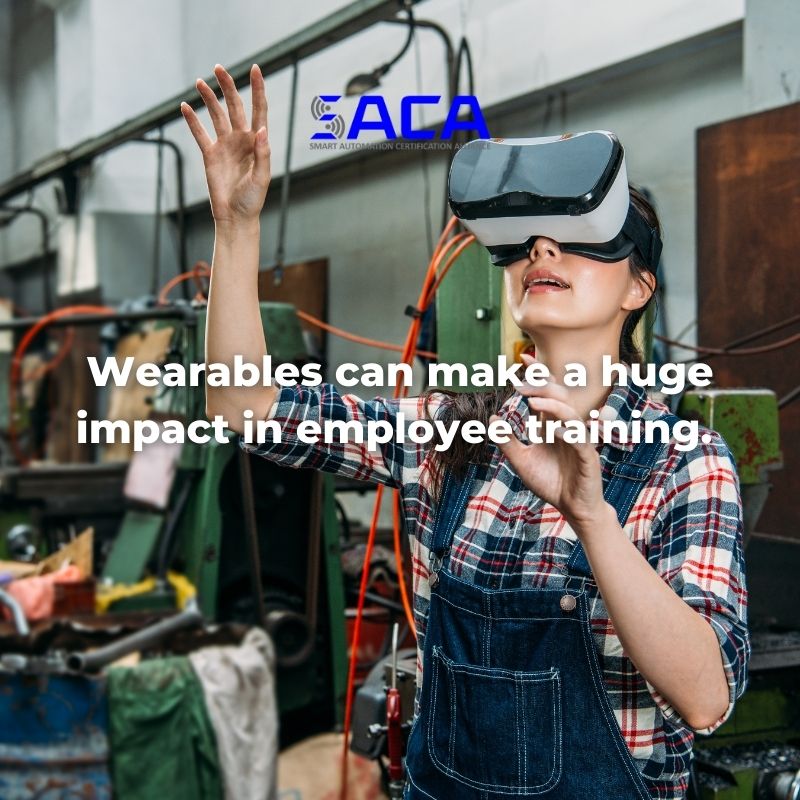
Will the trend of wearables in the industrial workplace continue? Authors like van Heerden believe it will: “Wearable technology will continue to grow within the industrial sector as it has clearly demonstrated its benefits. Productivity is increased, safety is improved, errors are reduced and training is more meaningful when wearable technology is incorporated.”
Recent research supports his view. Gartner predicts “total wearable sales of $81.5 billion in 2021, while a report by Research and Markets predicts the industrial wearable devices market will exceed $2.78 billion by 2024, increasing annually at a rate of 9.2%.” The same appears to hold true for the logistics industry: “a 2018 study logistics association MHI predicted that within five years, 70 percent of warehousing and distribution facilities would adopt wearables.”
Industry would not be seeing these benefits without the cooperation of willing employees. In his article, Garland notes that employees have readily embraced the use of wearables in the workplace, because “it empowers them to talk with management about how a facility could be improved.” As their behavior in the workplace changes in response to data gathered from wearables, employees can initiate conversations that lead to meaningful changes that improve their jobs.
Contact SACA to Learn More about Smart Automation Certifications
Wearables are just one of the many forms of new advanced, “connected” technologies that characterize what’s commonly known as Industry 4.0. These technologies, as a group, also go by a variety of monikers, including Smart Factory and the Industrial Internet of Things (IIoT).
Today’s workers need more advanced technical and technological skills than ever before. Unfortunately, there aren’t enough workers with these skills to fill the many roles available today, creating what is known throughout industry as the “skills gap.”
How can modern businesses find the workers they need? How will educational institutions teach the skills modern industry needs? These are questions that demand answers, and one promising solution is the development of industry-standard certifications that focus on connected-systems skills. The Smart Automation Certification Alliance (SACA) sits at the forefront of the effort to certify students and workers who demonstrate the required knowledge and hands-on smart automation skills employers so desperately need. To learn more about Industry 4.0 certifications and how SACA can help both educational institutions and industry employers begin the task of bridging the Industry 4.0 skills gap, contact SACA for more information.

- Published in News
Does Smart Automation Eliminate Employment Opportunities In Food & Beverage Manufacturing?
Spoiler alert – no! Contrary to the narrative that evil job-killing robots are coming to limit employment in the manufacturing industry, automation and smart innovations are facilitating: growth, efficiency improvements and well-paying jobs. While it’s true that some plants are struggling to employ enough new workers, the solution to the skills-gap is training. Food and beverage manufacturing environments can be challenging for humans – sometimes featuring extreme temperatures! Interviewed by Food Engineering Mag (.com), David Ziskind, director of engineering at Black and Veatch stated “Focusing on automation in areas where humans are less comfortable is a good place to start”. While automation is leading companies forward, the industry still relies on people. Recent events have put a strain on workers, talking about the fluctuations in customer demands at the beginning of 2020, Fooddive.com tells us, “[…] workers had to simultaneously deal with supply shortages, rapid onboarding of new suppliers, wild demand swings, and fundamental changes in packaging to cater to the shift from foodservice to retail. This happened as stringent new workplace safety rules and remote working caused production labor costs in the U.S. to surge by up to 20%.”
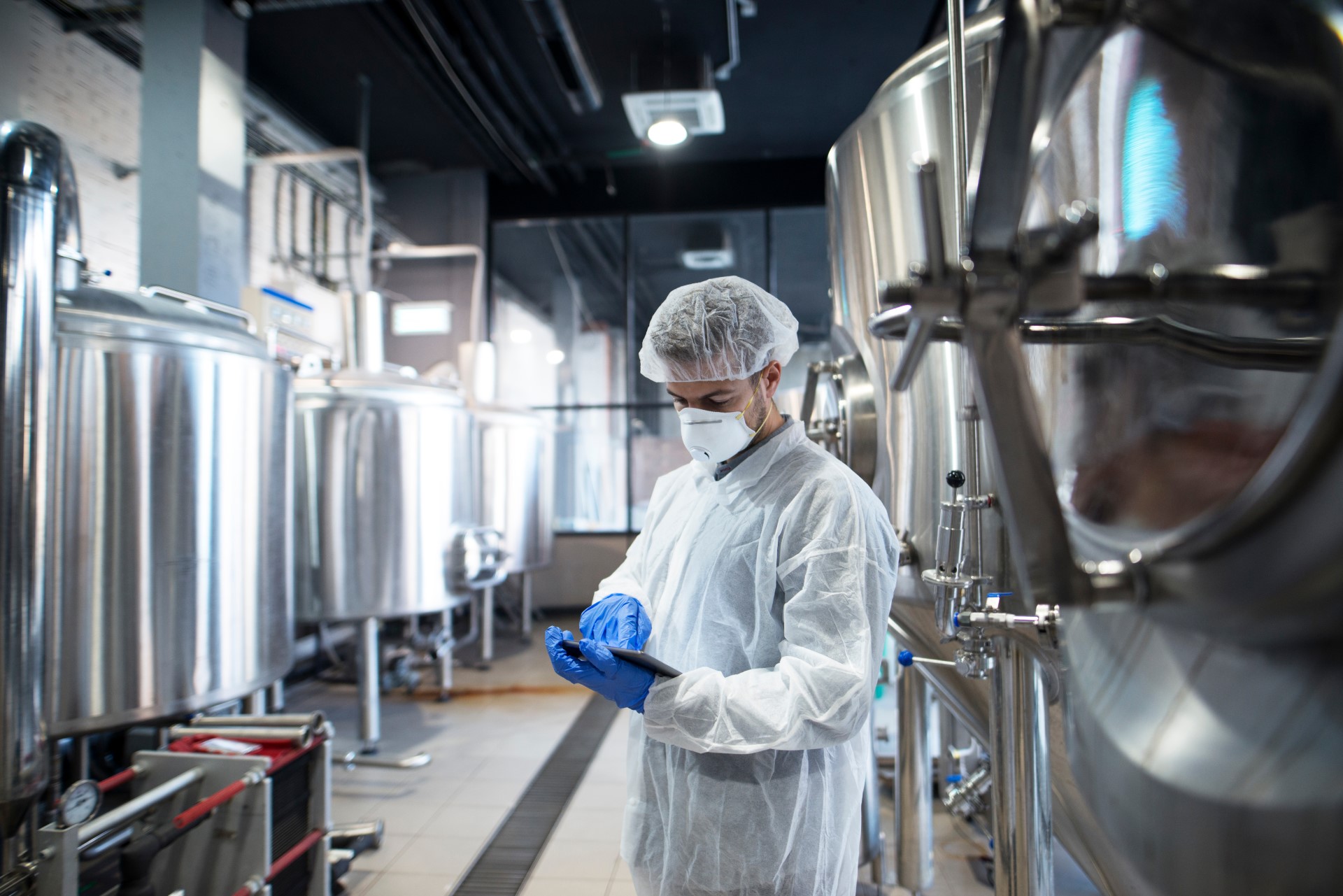
Have You Tried Turning It Off And On Again?
The rapid embracing of industry 4.0 technology in the wake of the COVID-19 is part of, what the World Economic Forum recently coined ‘Great Reset’. This term is often misconstrued by conspiratorial minds, but in reality describes the 4th industrial revolution – ‘a decisive set of actions oriented toward delivering value not only to companies themselves but also to society as a whole’. Technological advancements that have been waiting in the background for more companies to embrace them are now being proliferated throughout industries. People returning to the workforce may find themselves in a complexly modernized environment. This article from Mckinsey.com is optimistic about the reset, ‘by transforming the nature of work through intentional upskilling and/or reskilling efforts, […the great reset is…] empowering workers to realize their potential through new ways of working.’
A Brave New World in Manufacturing
Tyson foods are seeing a major discrepancy between demand for their product and their ability to staff their processing lines adequately, according to a Fooddive.com article Tyson are finding it ‘challenging […] to see the kind of applicant flow necessary to fill the gaps’. The COVID-19 pandemic has led some potential employees to ponder their cost benefit analysis when going to work in areas such as manufacturing, but those personnel could find new opportunities within their existing workplace to acquire more skills, and level-up their employment. New positions have opened up in manufacturing such as:
- Technician
- Support Engineer
- Applications/Software Engineer
- Software Developer
- Service Specialist
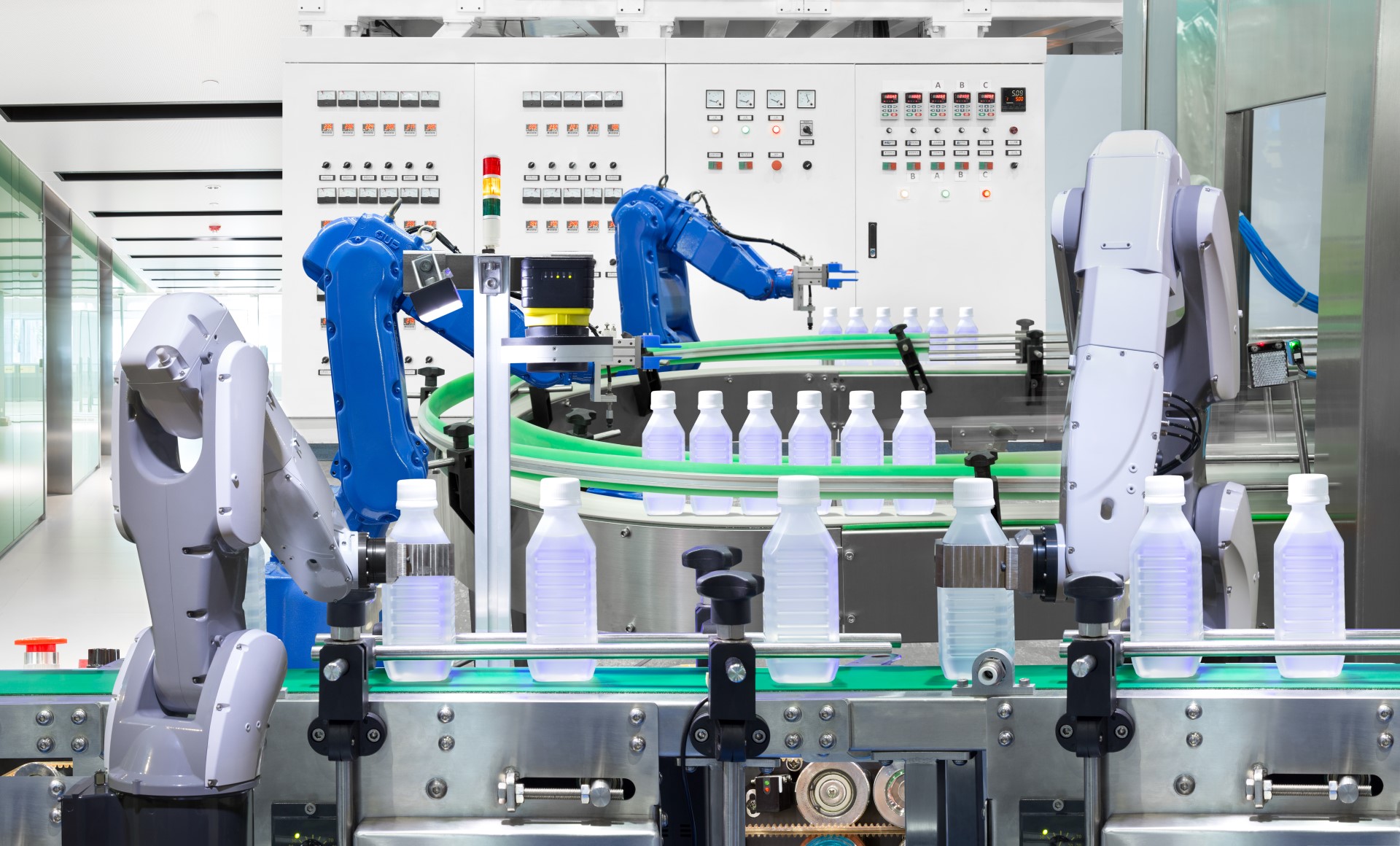
All these positions require specialist training and candidates with certification in these areas will be sought out by firms that have embraced industry 4.0. According to this recent Mckinsey study, ‘In Europe and the United States, […] demand for physical and manual skills in repeatable and predictable tasks is expected to decline by nearly 30 percent over the next decade, while demand for basic literacy and numeracy skills would fall by almost 20 percent. In contrast, the demand for technological skills (both coding and especially interacting with technology) is expected to rise by more than 50 percent, and the need for complex cognitive skills is set to increase by one-third.’ Writing for Industry Week.com, the author of Saving American Manufacturing, Michael Collins states, ‘the only viable alternative […for modern manufacturing staffing…] is to focus on investing in advanced training needed for these highly skilled jobs’. And once those skills are in place credentials will be required to properly fill positions within companies.
How SACA can help
Many certifications are available today that address isolated competencies, from machining to maintenance and IT, but SACA certifications are different. They certify “connected systems” skills that address the integration of these technologies with Industry 4.0 technology.
With the help our partners, SACA has created certifications that are industry-driven, developed for industry by industry. They are developed through a rigorous process that begins with the creation of truly international skill standards, endorsed by leading experts in Industry 4.0 technologies throughout the world.
SACA’s Smart Automation certifications use a modular structure to enable them to fit a wide range of individual needs, industries, and educational environments, and are available in three categories – Associate, Specialist, and Professional. Each certification is stackable, allowing individuals to start with one certification and add other certifications to customize their documented skills.
All SACA certifications are occupationally focused, so they prepare individuals for specific careers in the world of Industry 4.0. If you would like more information into SACA’s world-class Smart Certifications, please contact us!
Students that display a flair for lateral thinking will relish roles that involve responding to the automated diagnosis of problems with system components diagnosing problems or inefficiencies in a digital supply network. Maintenance of the processes and components used in an industry 4.0 optimized facilities requires keen critical thinking skills and a deft hand for troubleshooting issues. In addition these skills are valuable to system designers looking to ensure the safest and most efficient product delivery.
Thanks to the help of our partners, SACA has created certifications that are industry-driven, developed for industry by industry. They are developed through a rigorous process that begins with the creation of truly international skill standards, endorsed by leading experts in Industry 4.0 technologies throughout the world.
SACA’s Smart Automation certifications use a modular structure to enable them to fit a wide range of individual needs, industries, and educational environments, and are available in three categories – Associate, Specialist, and Professional. Each certification is stackable, allowing individuals to start with one certification and add other certifications to customize their documented skills.
All SACA certifications are occupationally focused, so they prepare individuals for specific careers in the world of Industry 4.0. If you would like more information into SACA’s world-class Smart Certifications, please contact us!
- Published in News
Transposing your student’s skills into the Smart Factory environment
The industrial sector is currently moving through a paradigmatic shift, as manufacturing companies embrace more automation in the development of smart factories. Industry 4.0 is our present, and future as the most nimble companies poise to become intelligently networked leaders of their field. According to Forbes manufacturers plan to build 40% more smart factories over the next five years, which a Deloite study claims has the potential to create a huge amount of high-skilled occupations. In spite of concerns over potential human redundancies, the progression into the future is creating the need for highly skilled (and well paid) employees. As the industry embraces automation it encourages more opportunity for the development of new expertise, and for existing technical skills to flourish!
Identifying How Your students’ Skills Can Be Integrated Into Industry 4.0
Educators can thoughtfully guide their students into roles that value education and skills when the core principles of how the manufacturing industry has progressed, in response to industry 4.0, are understood. Strategically, mentors hugely benefit from open communication channels, and partnerships with transitioning facilities to identify prevalent needs and design programs that prepare students for success. Additionally, educators should identify which certifications are most recognized by employers.
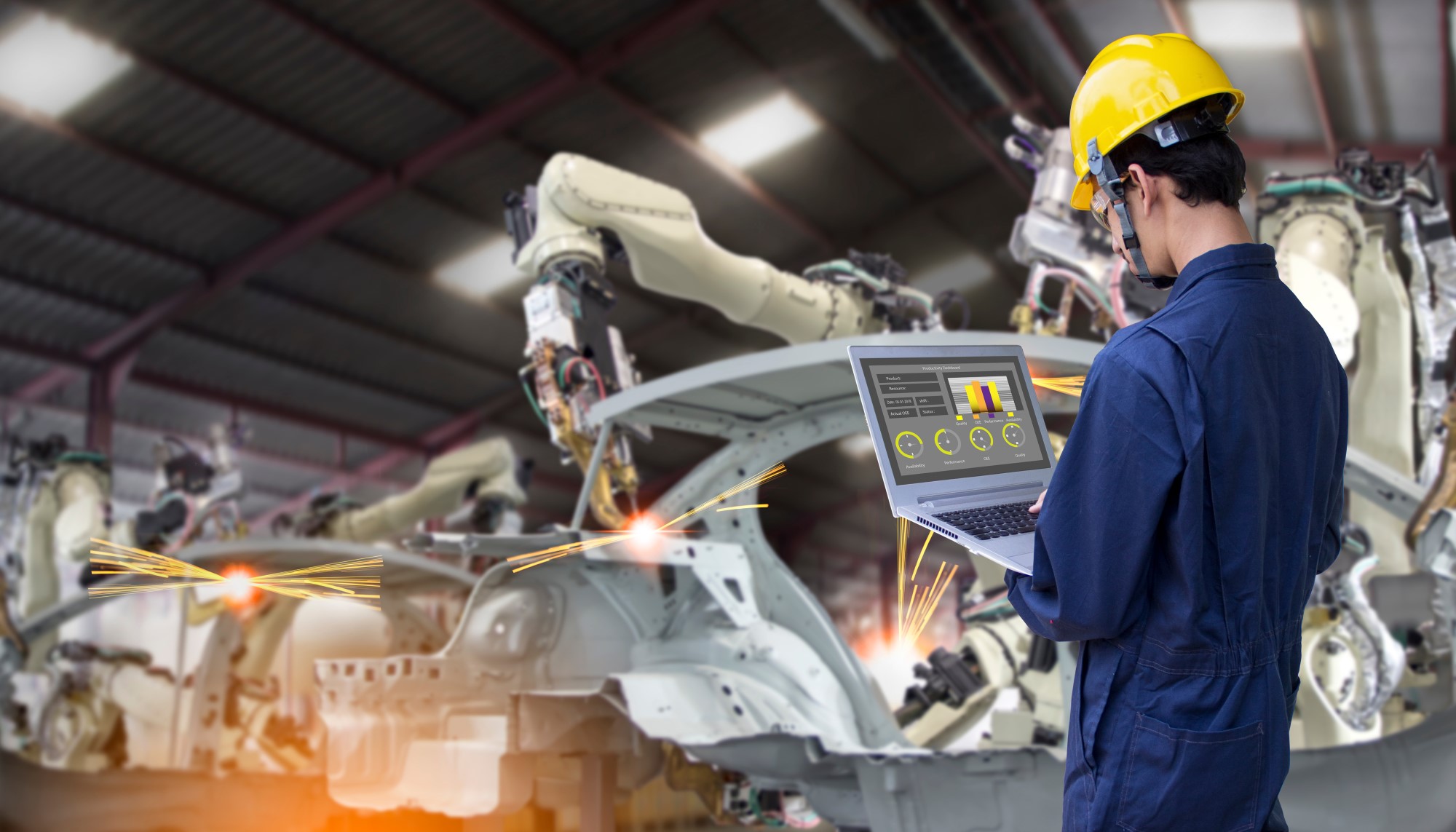
Enhancing The Role Of IT
Inter-connected manufacturing environments have created the requirement for expertise in: programming, networking, security, and advanced skills in networked systems. For example; IT specialist skills take on a reinvigorated essentiality as smart factories connect their physical systems, operational information, & human assets to control manufacturing, maintenance, inventory, & supply chain operations. Rather than the traditional assumption that IT professionals will see most of their time spent within an office, talent recruited into a smart factory paradigm find themselves integrated across many more departments in a company, trading pocket protectors for hard hats. Smart factories are opening up an entire new range of opportunities for job-seeking IT professionals with the required skills and credentials.
Talk The Talk
Smart manufacturing is being discussed everywhere, from the shop floor to the national media. New technologies in smart factories present the opportunity to work more effectively across disciplines and organizations. An effective modern workforce operating with an automated product chain encourages interdisciplinary collaboration by teams of category experts. Ensure that your students have the credentials that will enable them to walk the walk.
How Will You Manage?
Where issues arise in regards to safety and logistics students can use aptitude for management and planning to optimize an automated work setting. Since a smart factory is designed to be more intelligent and flexible, approaches to the management of people and machines have changed. Organization is no longer performed on a per process basis, say’s Cleverism.com; instead, entire production chains are networked with each other.
Troubleshooting From The Hip
Students that display a flair for lateral thinking will relish roles that involve responding to the automated diagnosis of problems with system components diagnosing problems or inefficiencies in a digital supply network. Maintenance of the processes and components used in an industry 4.0 optimized facilities requires keen critical thinking skills and a deft hand for troubleshooting issues. In addition these skills are valuable to system designers looking to ensure the safest and most efficient product delivery.
A Vast Collator Of Data
The Industrial Internet of Things (IIoT) presents a groundbreaking opportunity for data capture at each step of a manufacturing process. Components of a smart factory can track all elements of the production chain and communicate information and even anticipations within the network. The communication between each device allows unprecedented access to data. Students should understand the complexities of an industrial network.

Moving With The Technology
As the machines on the production line become enriched, so to do the skills of the employees. The sophistication inherent in smart factories encourages, and indeed requires, high-skilled employees. By using the right tautological tools, along with corporate partnerships and accredited certification’s; educators can confidently encourage students, as they develop their proficiency, that they are developing vital abilities for the future. This represents a broadening of the field; and speaks to the in-demand skills that employers are eager to welcome into their companies.
With all of these future careers on the horizon, industry-endorsed Industry 4.0 certifications will become even more valuable. That’s why the Smart Automation Certification Alliance (SACA), a non-profit organization, has made it our mission to develop and deploy Smart Certifications for a wide range of industries.
Thanks to the help of our partners, SACA has created certifications that are industry-driven, developed for industry by industry. They are developed through a rigorous process that begins with the creation of truly international skill standards, endorsed by leading experts in Industry 4.0 technologies throughout the world.
SACA’s Smart Automation certifications use a modular structure to enable them to fit a wide range of individual needs, industries, and educational environments, and are available in three categories – Associate, Specialist, and Professional. Each certification is stackable, allowing individuals to start with one certification and add other certifications to customize their documented skills.
All SACA certifications are occupationally focused, so they prepare individuals for specific careers in the world of Industry 4.0. If you would like more information into SACA’s world-class Smart Certifications, please contact us!
- Published in News





